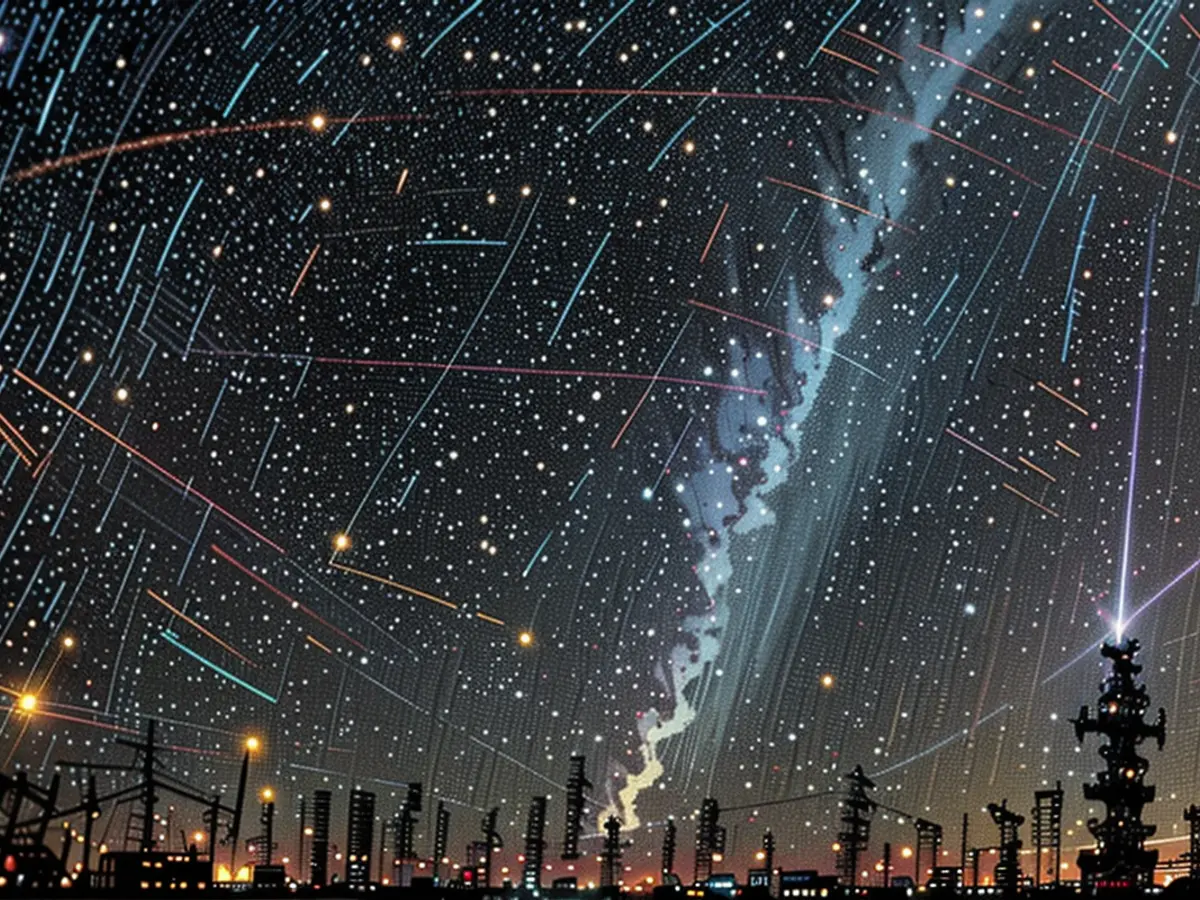Unleashing the Starlight Shakedown: Astronomers Face Off Against Brighter Starlink Satellites
SpaceX is cooking up a massive expansion for its Starlink satellite network, but the astronomical community is far from seeing stars. The upcoming Direct-To-Cell (DTC) satellites, scheduled to be five times brighter than their current Starlink counterparts, have got those in the cosmos peering through their glasses with worry.
DTC satellites aim to be more than just networking wizards; they'll offer direct access via smartphones, sans the need for additional antennas. Sound enticing? Not for astronomers, who've sounded the alarm against these blinding Beacons of SpaceX.
Post a successful trial run of six prototypes in January, SpaceX filed an application for a staggering 7500 DTC satellite launch, according to researchers from the International Astronomical Union (IAU) in a recent study. If loosed upon the skies, these satellites are expected to orbit within a snug 340 to 345-kilometer altitude. Naturally, this has left the IAU to weigh in on the potential repercussions.
Turning the Dial on Brightness
Anthony Mallama and his team from the "IAU Center for the Protection of the Dark and Quiet Sky from Satellite Constellation Interference" analyzed six already orbiting prototypes, utilizing data from observers the world over and precise measures with the MMT9 robotic telescope. Their finding? These satellites gleam up to a whopping 4.9 times more luminously than previous Starlink satellites. However, they emphasize these figures come with a grain of salt – the sheer role of the satellite's antenna in its brightness is still unclear.
Switching off the Spotlight
In the past, SpaceX proved itself a friend to astronomers, collaborating on measures like less reflective coatings to dial down the satellites' brightness. If implemented effectively for the DTC satellites, the increased luminosity might potentially plummet by half, dipping to just 2.6 times its initial glow.
SpaceX currently juggles over 6000 Starlink satellites in low Earth orbit, eyeing a future herd of over 34,000. With the number of satellites climbing, interference-free observation becomes an ever-challenging task for astronomers. In response, the IAU has steered its own satellite monitoring service for two years, offering a lifeline to astronomers navigating through the technological maze.
Keep Your Eye on the Sky
With the Commission tasked to grapple with the brightness issue, will SpaceX dim its DTC satellites' neon glow? Or will the increase in illumination leave us in a night sky no longer our own? The fate of the cosmos rests in the constellation-flecked hands of SpaceX.
Bonus Insights
- Starlink satellites' brightness initially took everyone by surprise, including SpaceX and the astronomical community[1][5].
- Starlink's impact on observations is still relatively minor, yet the future increase in the number of satellites poses significant concerns[5].
Want to learn more about Starlink's past and future brightness solutions? Check out the links below:







